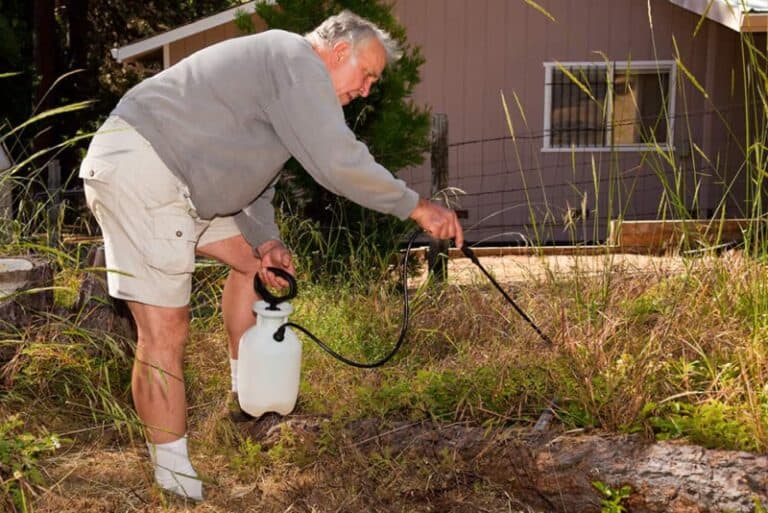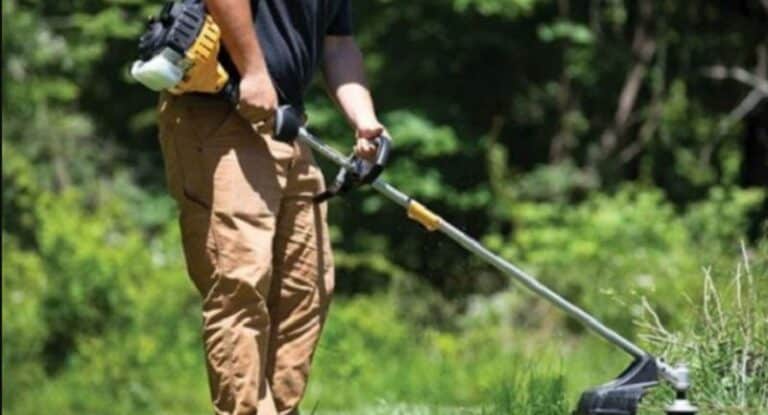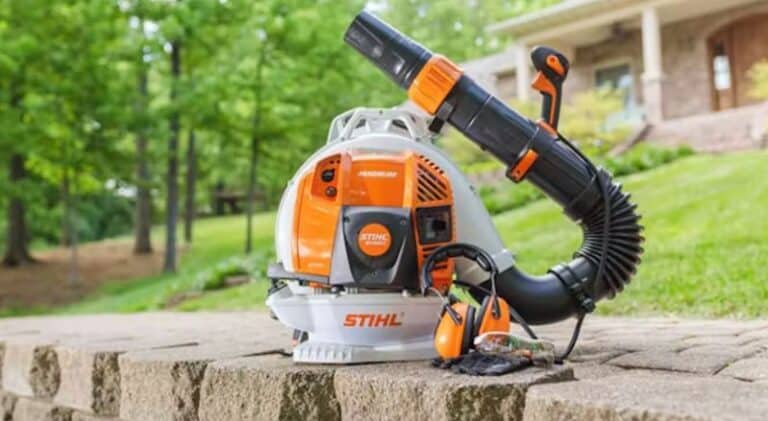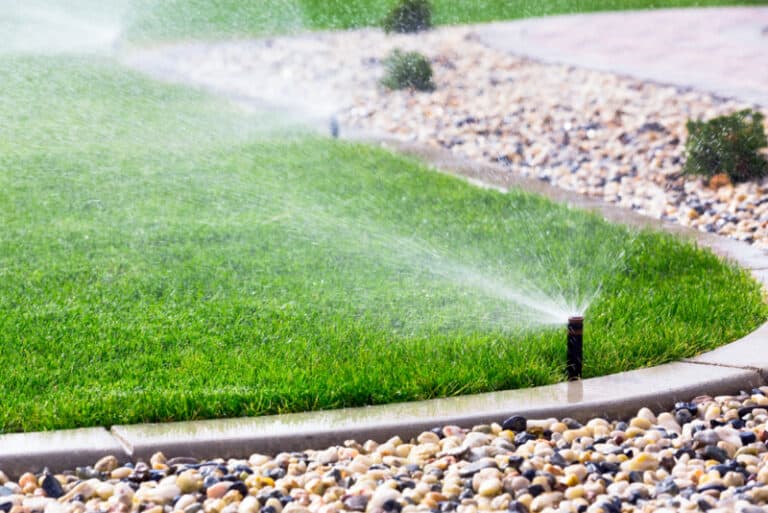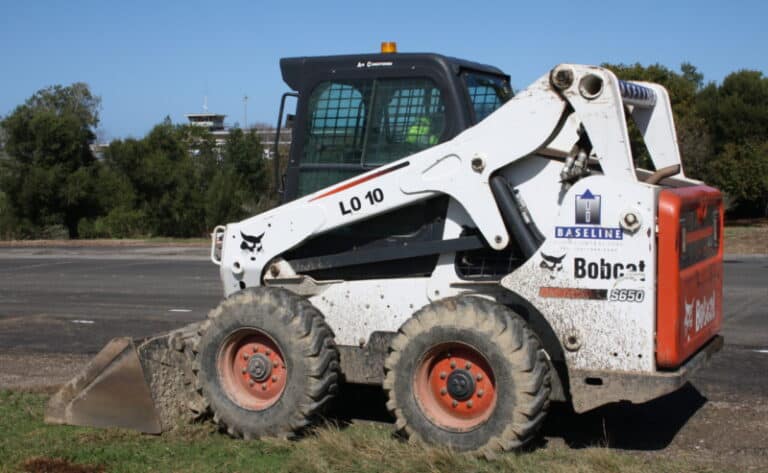Should You Cut Weeds Before Spraying Them? A Guide
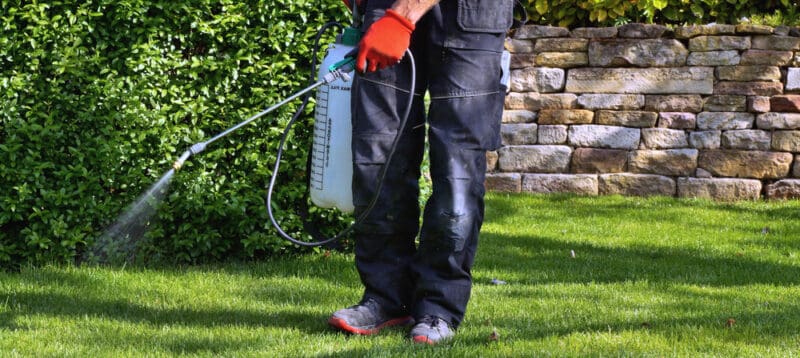
Spraying your weeds is a powerful way of improving your lawn’s overall look and creating a more appealing and attractive look. However, many people may cut their weeds before spraying because they think it helps with this process. So, should you cut weeds before spraying? Let’s take a deep look at this question to give you a definitive answer to whether it helps with this process or not.
Should You Cut Weeds Before Spraying? That Depends on the Herbicide
Weed killers come in a few different types, primarily pre-emergent and post-emergent. Whether you should cut your weeds before spraying depends on which type you use. Understanding these two herbicide types and how cutting may help (or hinder) this problem is critical to your lawn care process. It could distinguish between effective weed control and watching them grow out of control.
Cutting With Pre-Emergent Weed Killers
Pre-emergent herbicides are used on weeds before they emerge and attack the seeds while germinating. They are typically spread early in the year to improve their effectiveness and are one of the best ways to manage weeds before they grow. You have to be a bit clever with these herbicides because you have to know what kind of weeds are likely to develop in your area before applying them.
So, should you cut your weeds before spraying pre-emergent herbicides? Typically, it is best to cut your weeds only if you use one that is favorable to your specific grass. For example, some grasses may respond best to certain brands and fertilizer types. Cutting your weeds and grass before spreading your pre-emergency herbicide may help it absorb into the soil and kill the seeds easier.
However, this step isn’t a wise choice if your herbicide is unsuitable for your grass type. Talk to your lawn care expert about what kind of weed killer is best for your lawn type. They can help you find one that best suits your needs. Generally speaking, though, it is okay to cut your weeds before spraying these treatments: it shouldn’t have an adverse effect on its efficiency.
Cutting With Post-Emergent Herbicides
While pre-emergent weed killers are a powerful tool that many people may enjoy when used properly, most people are going to use post-emergent weed killers. That’s because they’re more likely to notice weeds after they’ve grown and need a herbicide that can help. If you plan on using post-emergent weed killers like Roundup, it is best not to cut your weeds before spraying this product.
Why is that the case? Well, post-emergent herbicides work by getting absorbed by the plant and sending the chemical agent directly to the plant’s roots. As a result, you want as much of the weed as possible to absorb the maximum amount of this herbicide. Cutting your weeds limits this treatment’s effectiveness by decreasing how much of the grass leaf is available for the weed killer’s absorption.
This fact is true no matter what brand of post-emergent weed killer you purchase. You’ll get the best result if you don’t cut your weeds and let your herbicide absorb as much as possible into the blades of grass. That said, other types of weed killers are on the market, such as feed and weed items that can provide many benefits that other herbicides cannot.
What About When Using Special Feed and Weed Products?
Weed and feed products are designed to not only kill weeds on your lawn but fertilize your grass at the same time. They’re a fantastic and popular two-in-one product that may be all that some people need for their lawn care needs. Should you cut weeds before spraying with this product? Let’s examine how this product works first before answering in-depth. Spoiler alert: yes, it is probably best to cut before using them.
How These Products Work
Weed and feed products include a special combination of chemicals that simultaneously kill weeds on your lawn while feeding the grass. This compound supports your lawn’s health while targeting frustrating weeds. While more specialized wee killers may be more potent (such as if you can’t get rid of crabgrass in awkward areas), weed and feed products work as a general care option.
Typically, it is best to mow your lawn before you use these products. There are a few reasons for that. First, the herbicide is generally a pre-emergent type, meaning that mowing can help it absorb more easily into the soil. Second, fertilizer is best applied on freshly cut lawns because it too can absorb more easily into your soil. That said, you should wait a few days before using this product after mowing. That gives your soil some time to recover from the cutting experience.
Just as importantly, you should wait a few days before you mow your lawn again after applying this product. The reason behind this wait is obvious: if you mow too soon after applying, you could cause your weed and feed to disperse unevenly across your lawn. Try to apply it during the early part of the growing season before your grass and weeds begin spreading heavily.
Can You Spray Weeds Even After Cutting Them?
So you’ve already cut your weeds and aren’t sure if it’s a good idea to spray. Your concern is understandable, but never fear! You can still spray your lawn for weeds even if you’ve already cut. Just because your herbicide may be less effective after cutting doesn’t mean that they’re completely ineffective. It just means that you might get less weed management than you wanted.
Thankfully, there’s no major difference in how you apply your herbicides after you cut your grass. You can follow the same application processes, but make sure to be careful around water sources. Cutting the grass may make the herbicide flow more easily on the soil, which could cause it to enter the water like ponds, rivers, and even wells more easily and threaten your natural environment.
As a result, it is important to use a proper weed spraying process to keep your home and yard safe. Typically, there are a few different ways you can approach these steps. However, we’ll guide you through a few simple spraying steps. In this way, you can get the experience that you need and ensure that your lawn is as protected as possible from serious weed-based growths.
Proper Weed Spraying Process
If you want to safely and effectively treat and kill weed in your lawn, we strongly suggest the following simple process. While the following process is based on the method suggested by Roundup, it is typically adaptable to many different weed killer types and is simple enough for just about any homeowner to handle:
- Choose the Best Time to Spray – Based on the weed types on your lawn, choose a spraying time that makes the most sense for you. Don’t worry: we’ll give you a guide below that will make this process a little easier if you don’t understand basic spraying rules.
- Prepare Your Spray – Most herbicides come in a bottle that attaches to a hose. This bottle includes concentrated herbicide that the water helps dilute when sprayed. Attach your bottle to the hose or use whatever method the herbicide suggests in its instructions.
- Spray the Lawn – Carefully spray your lawn, holding the sprayer away from your body and pointing it towards the grass. Move your sprayer evenly across the grass, avoiding lingering too long and causing fluid to collect in these areas and increasing your contamination risk.
- Wait for the Fluid to Work – It should take at least 2-3 days or so for most herbicides to go into effect. After this brief waiting period, the weeds in your lawn should show visible signs of death. This includes drooping leaves or simply wilting and dying. You can leave them where they’re at to help fertilize your lawn more.
Try to apply your herbicide in warm weather between 45-90 degrees Fahrenheit and when it is likely to be rain-free for at least a few days. Spraying when it rains is a major mistake because it can cause the herbicide to spread rapidly into water sources and may cause a serious contamination risk. You must also use weed killer at the right time, based on your specific growth type.
When Should I Spray My Yard?
Choose your spraying schedule based on what type of weed you’re trying to kill. This should give you a better guide for this process and ensure that you destroy your weeds properly. Here are a few times to consider applying weed killer to your lawn.
- Crassgrass – Use a pre-emergent spray from mid-April to mid-May before the weed emerges. You can also use a post-emergent weed killer from mid-May to early June to help with these problems.
- Weed and Feed – When using weed and feed fertilizers, try to add them when you’d normally fertilize your lawn, including in early August through mid-October or before the snow falls.
- Broadleaf Weed Control – If you have a lot of broadleaf weeds that you need to eliminate, it is best to spread your weed killer in September through late October and then in May through late June.
You can also read:

